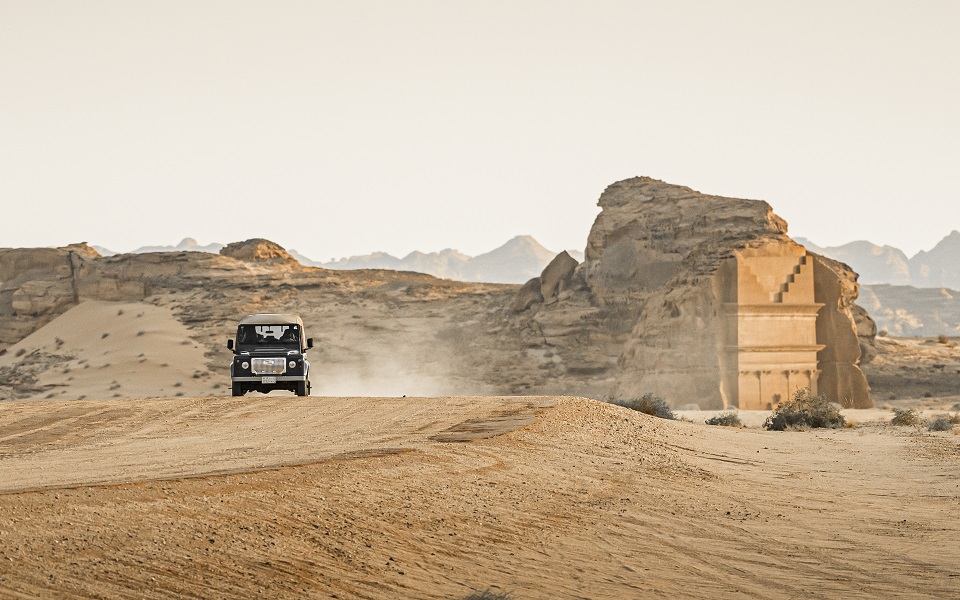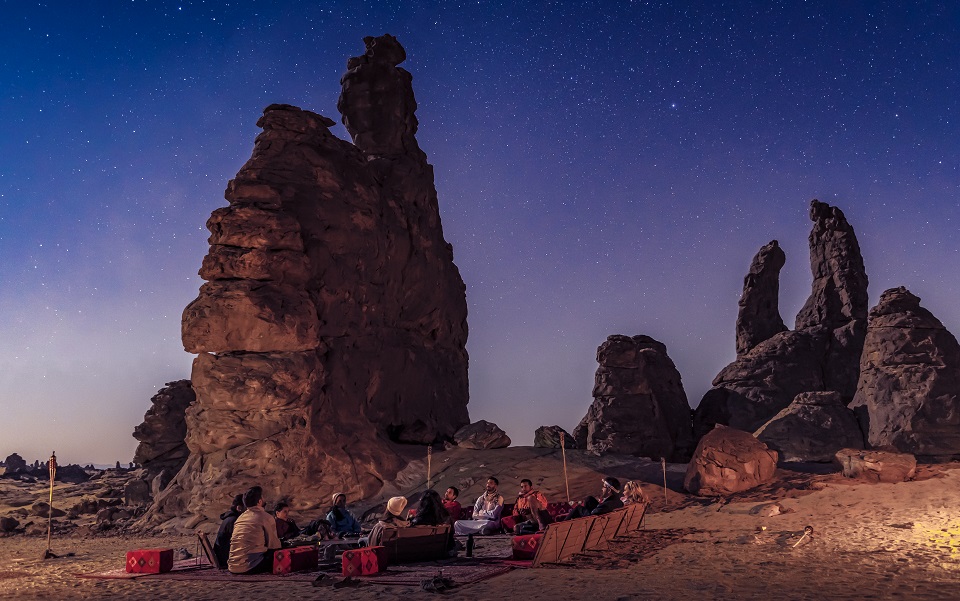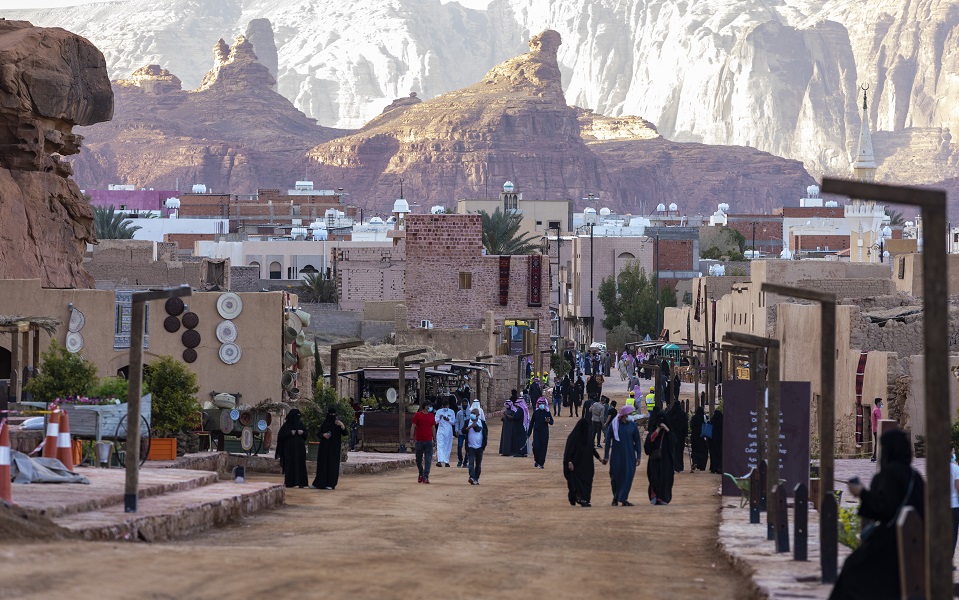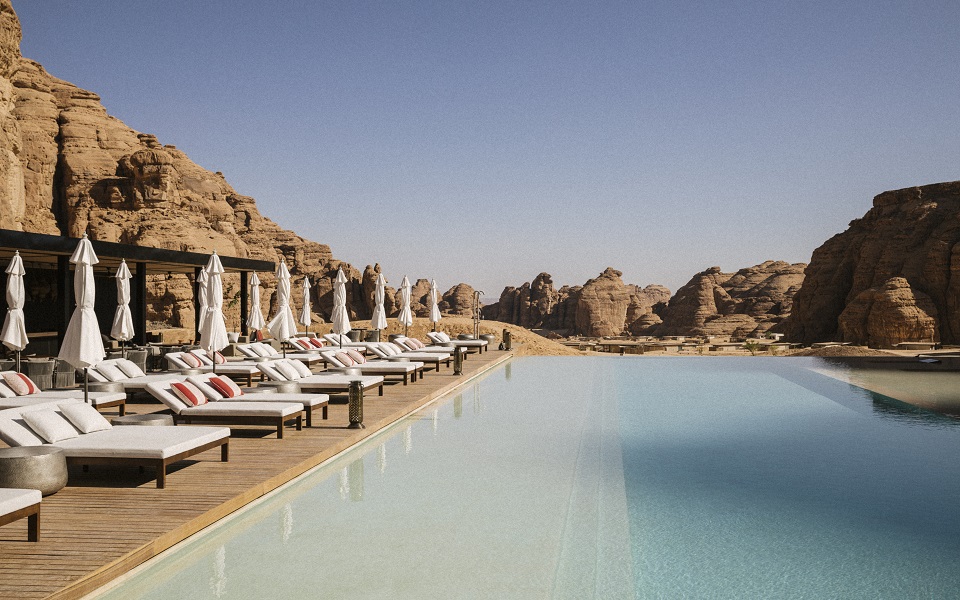Inside AlUla, Saudi Arabia, where monuments are older than the pyramids

Just when you think you’ve grasped how ancient the city of AlUla, Saudi Arabia is, you stumble upon an even older part, and then another, each earlier still. By the time someone mentions palaeolithic axe-heads from 200,000 years ago, a 12th century Islamic town is beginning to sound contemporary. What’s made all this Indiana Jones territory and intriguing history accessible today, however, is modernity: big air-conditioned 4 x 4s, affordable helicopter trips, new resorts that are both swanky and sustainable – and, most crucially, the e-visa.
AlUla boasts some of the most jaw-dropping natural attractions you’ll find on this Earth – but without the crowds of Petra or the inescapable hassle of most of Egypt
Until last year getting a visa to Saudi Arabia was laborious and available only to a few specialist tour operators or for family, business or religious reasons. I managed to get mine in an hour or two. The visas are key to opening up the country to tourists, and part of a broader plan to look to the time when the oil runs out. AlUla, 650 miles north west of Saudi’s capital of Riyadh, is never going to be a place of mass tourism, nor does it want to be. Instead it offers environmentally friendly luxury, adventurous activities like rock climbing, Dubai levels of pampering, and a clash of old worlds and new with some surprisingly ingenious new skyscrapers and cityscapes.

But more on those later. Crucially, AlUla boasts some of the most jaw-dropping natural attractions you’ll find on this Earth – but without the crowds and exhaustion of, say, Petra in Jordan, or the sheer hard work and inescapable hassle of most of Egypt. Some of these human-made sand structures in AlUla are older than the Pyramids. We start with a day trip to the ancient city of Hegra, Saudi’s first UNESCO World Heritage Site, in the company of a rawi, a 21st century version of the old oral tradition’s storyteller.
He walks us to some of AlUla’s 100 tombs carved deep in rock formations, and takes us inside one to see the hollows on the floor which held bodies. In Hegra, preservation of these incredible monuments takes precedence. Tomb openings will be rotated to minimise visitor impact and there are strict rules about climbing on the rocks or touching anything. As our guide Suleiman says: “We’ve come to this [tourism] relatively late, so we want to learn from other places’ mistakes”.

On other days we visit Danan, of which only an estimated six percent has currently been excavated, the ‘open air library’ at Jabal Ikmah with its hundreds of inscriptions and petroglyphs of people and animals and an archaeological site on a moonscape-like basalt plateau where an international team is studying the prehistoric stone mustatils – monuments made of sandstone which still baffle experts.
We had earlier flown over all these sites by helicopter which had given us the chance to take in the great swathes of green which vividly illustrate the reason for AlUla’s existence – it is an oasis. The underground water reserves and the natural springs were the foundation of its importance as a trading centre on the incense route, and later a resting place on the pilgrim path to Mecca. Today the water feeds 2.3m date palms and 200,000 citrus fruit trees and there’s a cool walk through the trees to AlUla’s Old Town.

En route we see the ancient and modern sides of the city clash when a barefoot and gloveless worker shinning a 30 foot-high tree trunk to hand pollinate a palm stops to take a call on his mobile. We pause to sample juice and eat the crepe-like saj bread cooked for us on a hot plate by a group of women. They, like most of the women we see in public, are masked because they will be encountering men who are strangers, but our guide Zeinab is not masked – she also drives and lives alone – nor are the European women living there.
All I’m asked to cover are my shoulders and knees. Everyone’s warm and welcoming. Hospitality, they insist, is an integral part of Arab culture and guests, wherever they go, are offered tea, coffee and juices. Alcohol is completely banned and I’m relieved to discover not much missed on my part. The only time I thought an experience might have been enhanced by a glass of red was when we drove to AlUla’s most famous landmark, Elephant Rock, to sit in a cushioned dug out and watch the sun set. It is spine-tinglingly strange to be told that aeons ago these rocks, folded and carved by the weather over millions of years, sat on the sea bed.

AlUla’s slogan is ‘journey through time’ but not just looking back, but looking forwards too. So there are new hotels and restaurants, the annual Desert X art fair with installations by internationally renowned artists and the extraordinary Maraya concert and conference venue, the world’s largest mirrored building whose 9700 panels reflect the desert by day and the stars by night. Typical of the new breed of resorts is Habitas, where I stayed, which has 96 villas along a mile and a half stretch from reception to restaurant and pool – each has an electric bike or an on-call electric buggy – with subtly coloured exteriors designed to blend with the surrounding canyons and crags.
Interiors and outdoor relaxation areas combine traditional designs with modern comforts while the spa offers treatments like date seed body scrubs and a choice of massages, some with moringa oil, others which, in deference to some local sensitivities, do not require undressing. In some ways, the dining scene feels as contemporary as London’s. We eat at a pop-up Annabel’s from the team at the London private member’s club and at a Jason Atherton restaurant on Maraya’s rooftop. Both offer sophisticated international spins on local dishes and clever mocktails with prices to match.
October to March is the best time to go. The weather is comfortable and there are festivals highlighting music, the arts and culture, wellness and the skies – with hot air balloon flights and vintage aircraft trips
The best time to visit AlUla, Saudi Arabia
Less formal and less expensive but still with delicious food are restaurants like Somewhere, Circolo and Okto with views across to the Old Town and to the new one beyond. Residents left the mud brick houses of the Old Town in the 1980s but I could still wander its squares and passageways – it was both walled and built like a maze to make it easier to defend – and climb the castle steps for another perspective. Shops and stalls sell jewellery and ceramics and basket weave artefacts but nobody hassles you to buy.
Some of the lovely things on sale have been made at Madrasat AlDirah, once the first girls’ school in the country and now a thriving arts and craft centre with an emphasis on traditional skills and regional sources. October to March is the best time to go. Not only is the weather in the comfortable 70s (though it can be very cold at night) but there are four different winter festivals highlighting music, the arts and culture, wellness and the skies with hot air balloon flights and vintage aircraft trips.
The only slight snag is that visitors need to hire a car with a driver or simply drive themselves. But with roads this smooth, petrol an almost unbelievable 50p a litre – and without a tempting boozy drink in sight – driving off into the Alula sunset with its marvellous sandstone monuments just makes sense.
Visit AlUla, Saudi Arabia yourself
Fly to AlUla via Riyadh or Jeddah with Saudi Airlines from £692 return. Villas at Habitas start from £500 per night, visit Ourhabitas.com/alula. Visit the Royal Commission for AlUla at Experiencealula.com